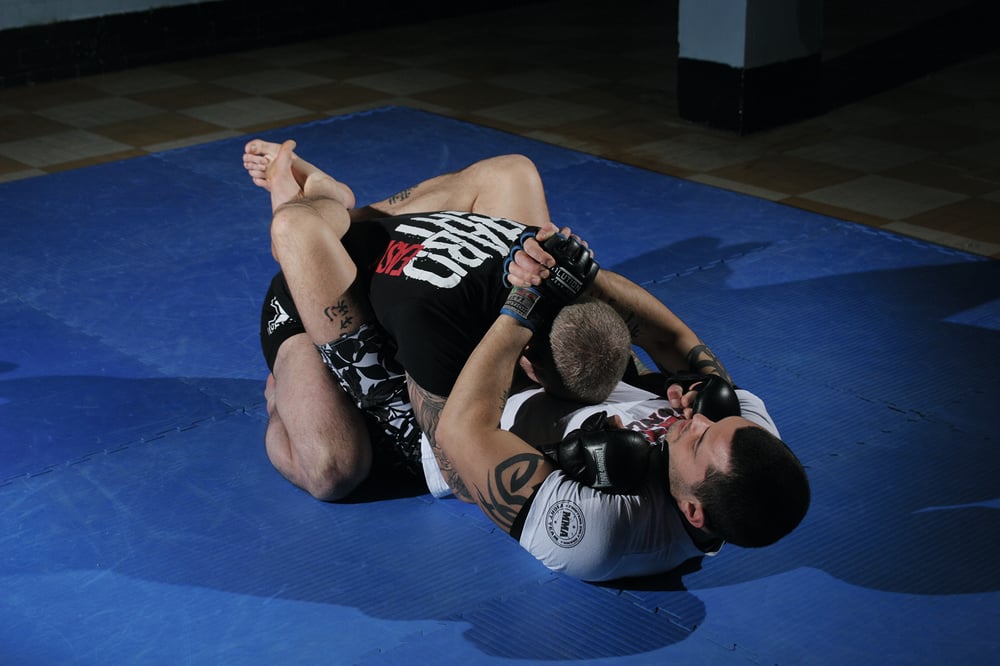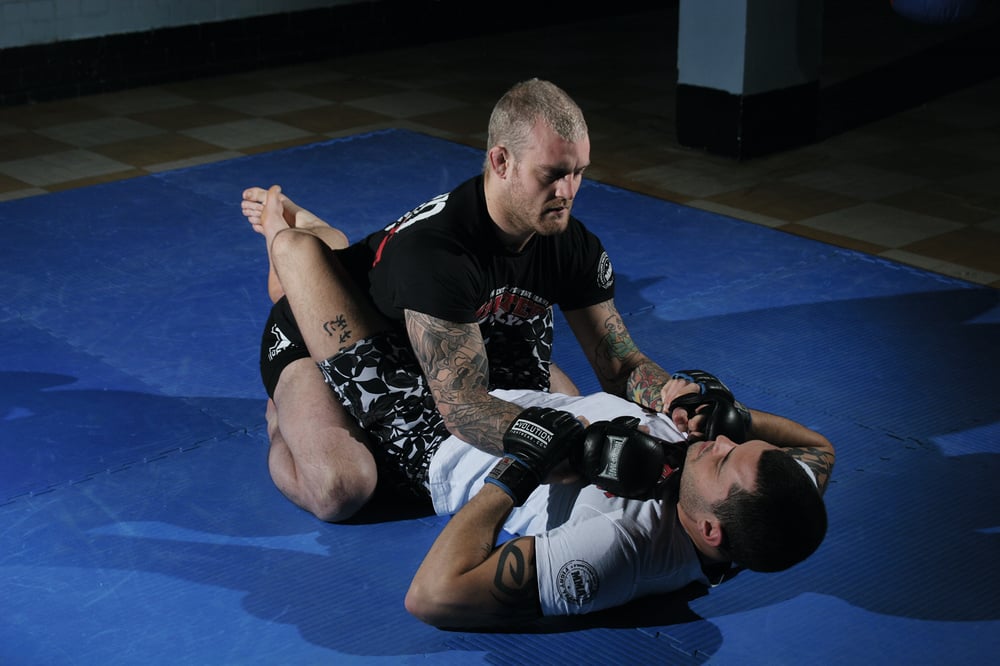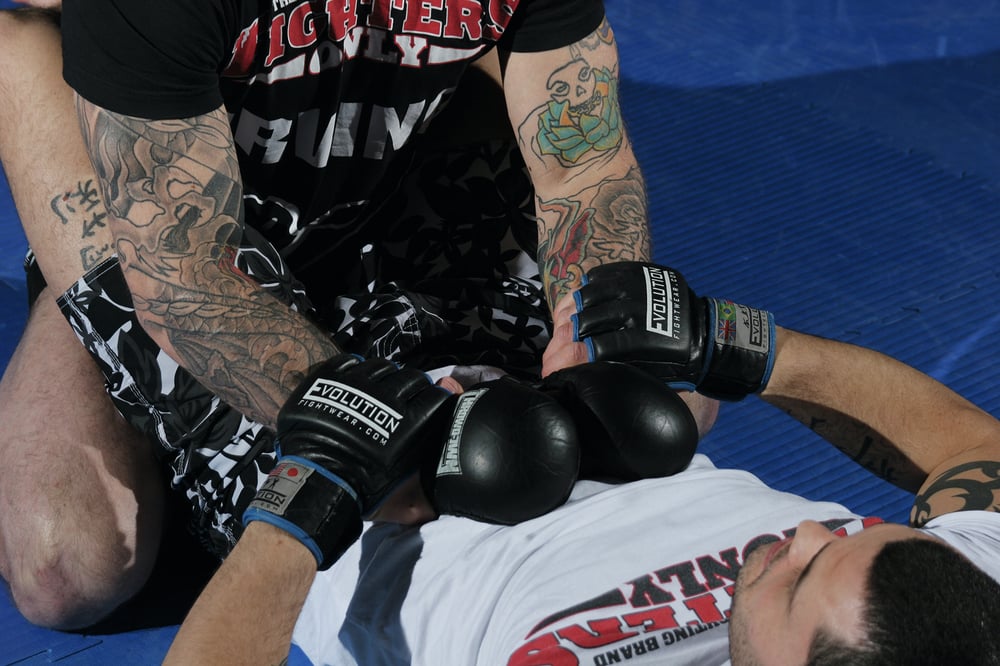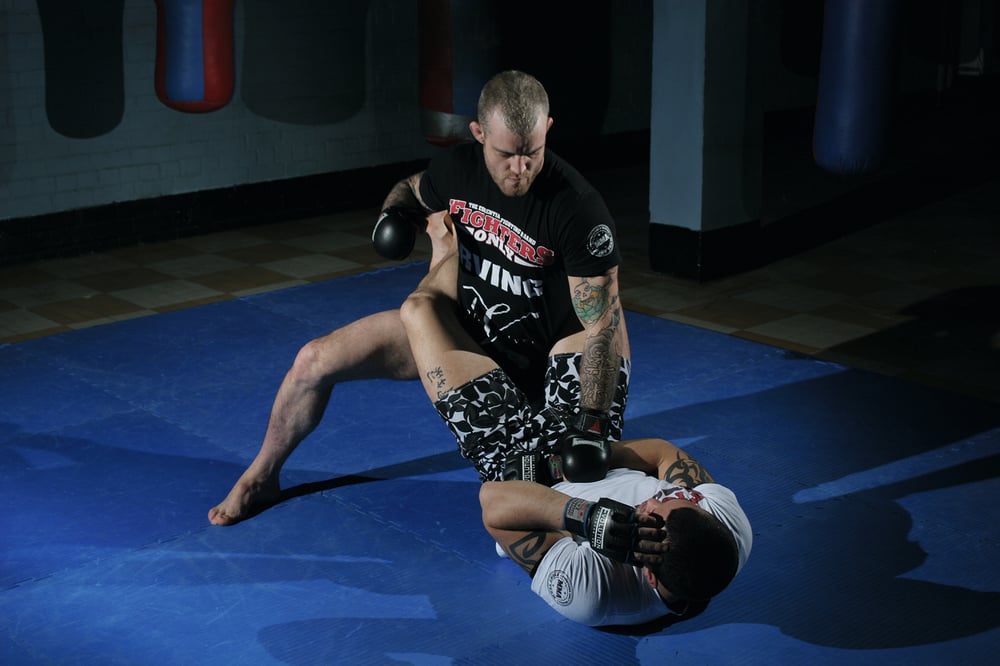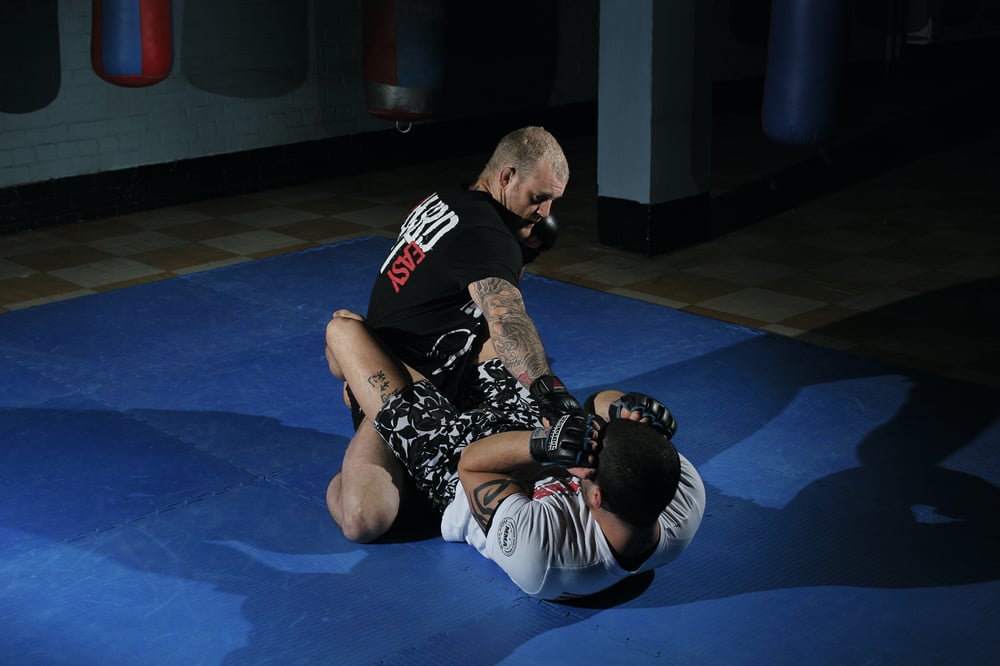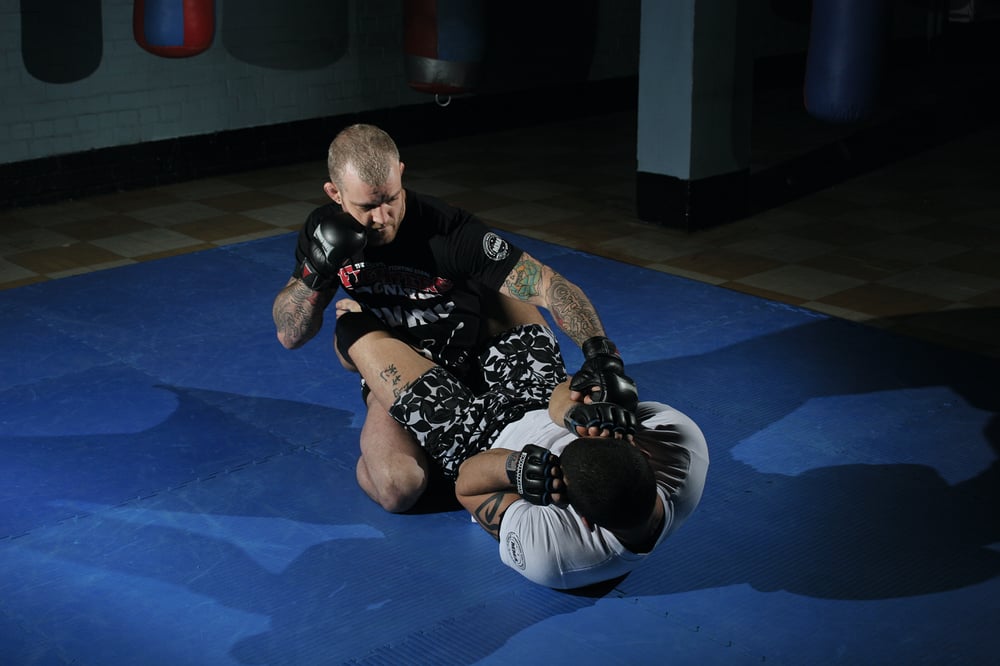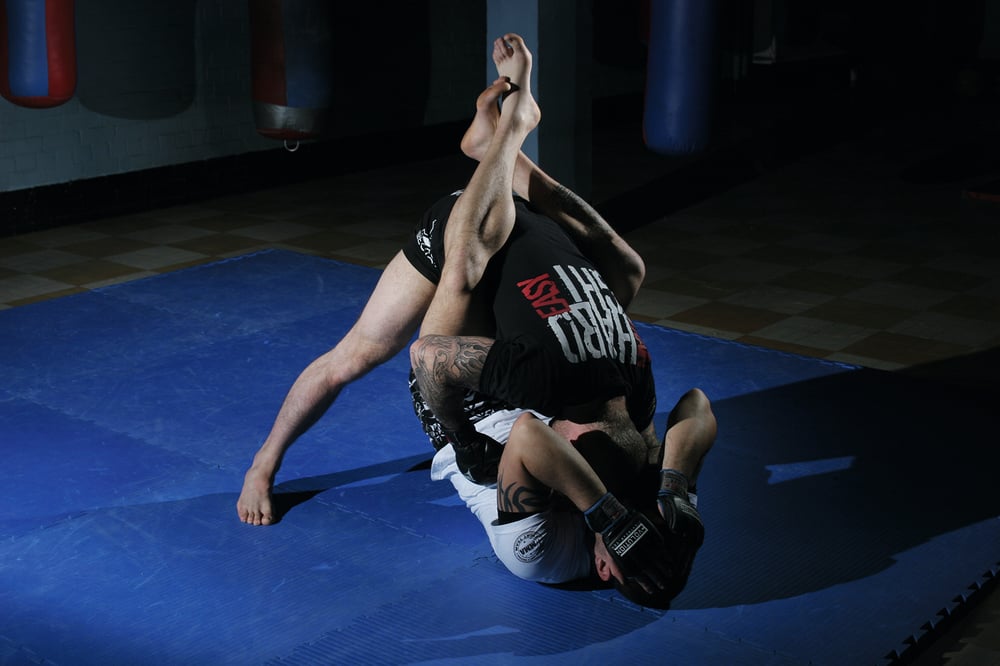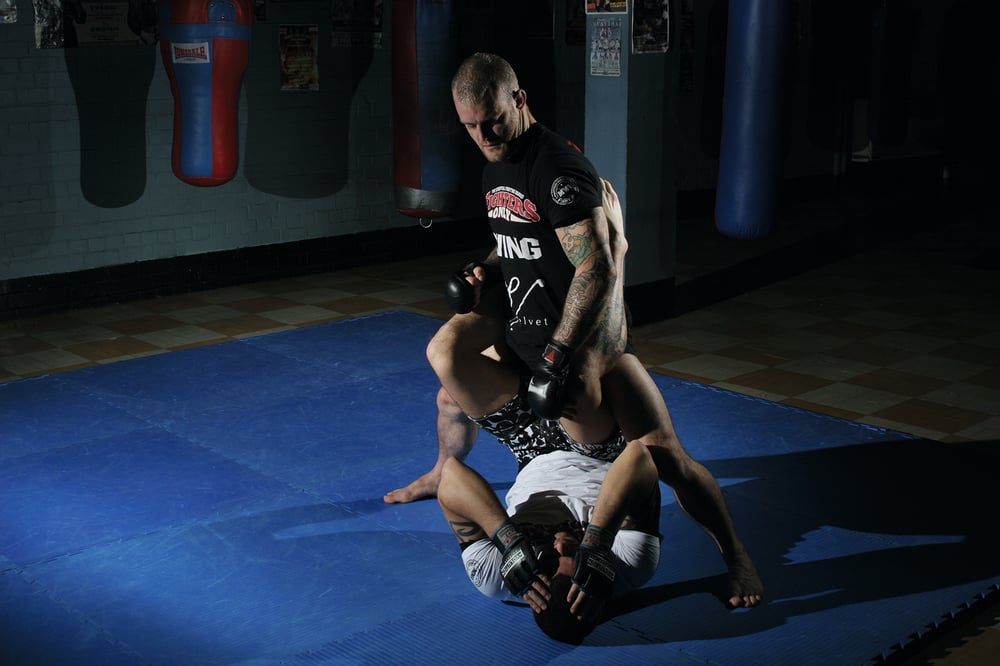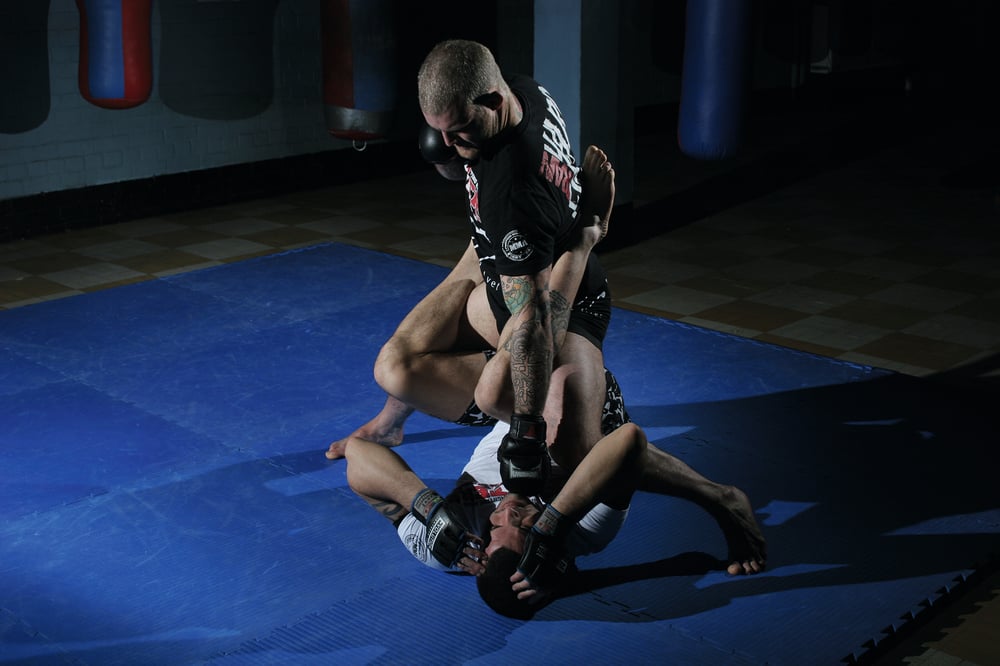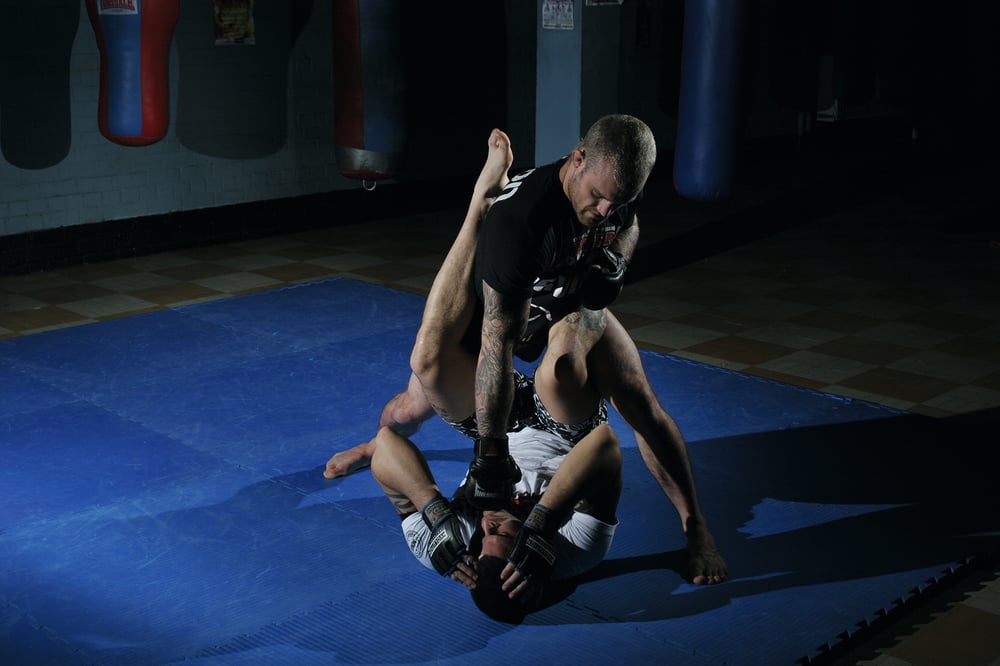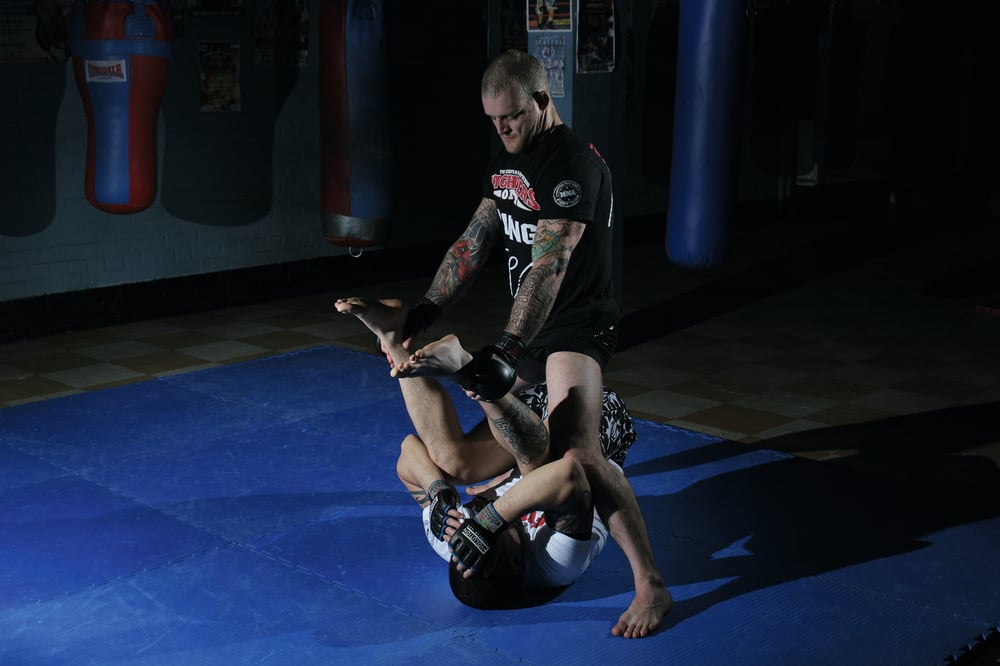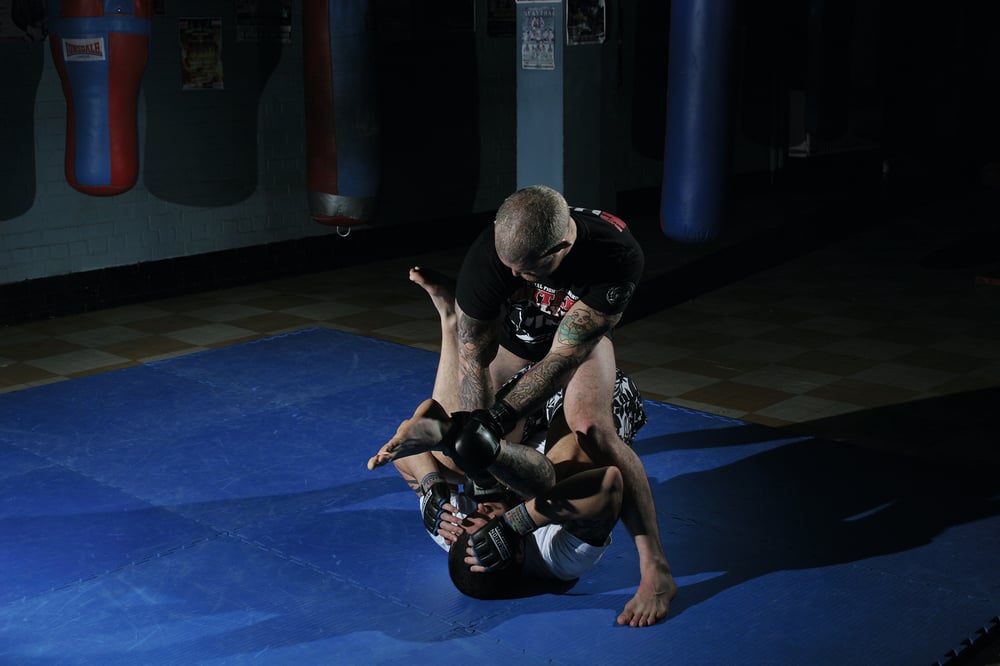
Issue 047
March 2009
For an excellent example of ground ‘n pound, check out the famous fight between virtuoso submission artist Frank Mir and our very own ground ‘n pound specialist Ian ‘The Machine’ Freeman. Freeman never allowed his head to be controlled by Mir and kept his posture strong throughout the fight. Furthermore, ‘The Machine’ dominated the hand positioning (allowing him to strike constantly) and never permitted Mir to begin his submission attacks. The guard should have been a position that allowed the jiu-jitsu fighter to control the match, but instead he found himself trapped beneath a ruthless onslaught thanks to a well-applied strategy of control and pressure.
Safety position: gaining inside control
Step 1 Pete (black) is in Knox’s (white) closed guard. His head is controlled, locked down against Knox’s chest, and his hands are on the mat. Pete cannot punch effectively from here, and is in danger of allowing Knox to submit him.
Step 2 Pete pushes his hands inside, resting on the chest just next to the armpits. If he reaches too far Knox can attack his arm, but here Pete is safe from submissions and is blocking short punches or elbows to his head from underneath.
Getting into punching position: hand fighting and posture
Step 1 A good inside control allows Pete to free his head. Pete postures up, puts his butt to his heels and raises his head high. Now that his head is no longer controlled he should be able to strike effectively. Knowing this, Knox has taken wrist control so he can deflect the punches.
Step 2 Close up on wrist control.
Step 3 Pete draws one arm over the other, not allowing his elbows to cross the centre of Knox‘s chest. Now that he has one hand in top position, Pete establishes a wrist control on Knox.
Step 4 Pete peels out the hand in bottom position and grips two hands on Knox’s lower wrist.
Power legging
Step 1 Now Pete can free his hand more easily from the one remaining wrist control. He cocks his hand back (elbow in) and raises his ‘power leg’.
Step 2 Pete delivers a straight punch, dropping his power leg with the blow. The knee should return to the mat at the same moment as the punch connects.
‘Tyson twisting’
Step 1 As one hand connects, the other cocks back. The hand that just connected is cueing Knox up for the next shot. Note that Pete has rotated his trunk as he cocks his hand back to wind up the punch.
Step 2 Pete whips his body back as he delivers the punch, generating power by twisting at the waist, not by ducking his head forward with the punch (which might allow Knox to re-establish a collar tie).
The tripod
When having difficulty posturing up the tripod can be an effective way to pin an opponent and stifle submission attacks while opening up opportunities for short punches and elbows. Take a look at the early days of Tito Ortiz’s career to see how this position can be effectively applied, especially when against the cage wall.
Step 1 Pete is stuck in Knox’s closed guard with his head trapped against the chest. Pete drives his head on to Knox’s jaw or face and stands up.
Step 2 From here Pete can hammer away with short punches to the rib cage or overhands to the side of the head.
Step 3 Now that Pete has stood up he has more weight on his inside control, so he can loosen Knox’s collar control and is free to posture up. Notice that Pete has split his stance. If Pete maintains a square stance as he stands it will be much easier for Knox to sweep him.
Stacking: neutralising the opponent’s hips
Step 1 As Pete delivers punches with the left, he drives his weight down, keeping his hips pressed forward so as not to fall back in to the closed guard, or even straight in to a triangle or armbar.
Step 2 Pete returns with a straight right, continuing to drive on, hips forward, beginning to stack Knox.
Step 3 Now that Pete’s hips are above Knox’s hips he can establish ankle control. Pete has to be wary of the up kick, but with the hips above hips and chin tucked, an up-kick from Knox will easily be deflected.
Punching and passing
Step 1 With both ankles controlled Pete can completely stack Knox, folding his ankles over his head. Now Pete can choose to release on ankle control and deliver a straight to Knox’s exposed head.
Step 2 Pete passes the guard, folding Knox’s leg over and knee riding across the back of Knox’s knees.
Step 3 From here Pete can pound away left and right. From this position he can pass to the side, the mount, a conventional knee ride, take the back (should Knox turn away from the punches) or simply stand away and force Knox to return to his feet.
...


